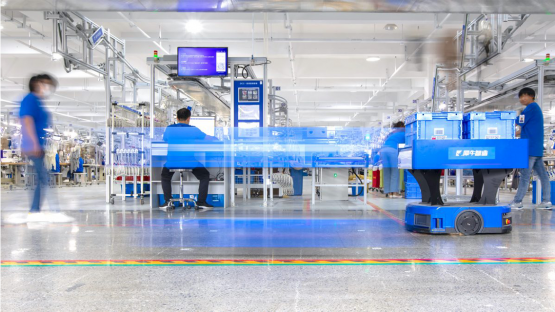The nuclear power supply chain and its management are undergoing significant changes as global trade shifts toward greater localisation and the nuclear industry adopts novel technologies such as innovative manufacturing and prepares for the introduction of small modular reactors (SMRs).
These and other topics were on the agenda at the 16th edition of the FORATOM-IAEA joint event on Management Systems. This year’s event, held virtually over three days last week, looked at how the global nuclear power plant and equipment industry – with revenue projected to reach US$ 49bn by 2025, up from US$ 36bn in 2017 – is managing an array of new developments amid the backdrop of the global pandemic.
“As in many other productive sectors, the COVID-19 pandemic also affected the nuclear supply chain by introducing longer lead times for new constructions and some major refurbishment projects while also impacting the mobility of contractors,” said Mikhail Chudakov, IAEA Deputy Director General and Head of the Department of Nuclear Energy in opening remarks at the event. Still, “the industry you work in is resilient. Despite the pandemic and all the related lockdowns, there were no enforced shutdowns of nuclear power plants or major disruptions or outages.”
The nuclear industry’s supply chains are vital for safe, reliable and effective operations throughout the life cycle of a nuclear power plant. But participants said the industry will need to achieve even closer coordination among licensees, regulators and suppliers in order to efficiently meet the needs of buyers, including new nuclear power programmes starting up. They discussed the implications of changes in international trade, as the preference shifts from global supply toward localisation and the advent of novel additive manufacturing methods like 3D printing.
Different national regulations, standards and legislation highlight the difficulty of harmonising the nuclear supply chain, as well as creating a global framework to enable the use of high-quality “commercial grade” components manufactured for other industries rather than specifically for the nuclear sector.
Through further innovation, the nuclear industry can manage such developments, participants said. For example, the Joint Research Centre, the European Commission’s science and knowledge service, is developing a methodology for qualifying materials and components produced by additive manufacturing that comply with Nuclear Codes and Standards (NC&S), said Oliver Martin, Project Leader for Long-term Operation of Nuclear Power Plants at the JRC.
As the nuclear industry works towards deploying SMRs over the next decade for both electricity and non-power applications, suppliers need to be fully aware of all requirements and emerging guidance, said Rich Everett, Head of Supply Chain for the Rolls-Royce SMR project in the United Kingdom. More than 70 SMR designs are currently under development worldwide in 19 countries, with two SMR units already in operation in Russia.
“I have a dedicated team of supply development engineers, whose job is to help new suppliers understand the requirements,” Everett said. “This industry will not be able to grow if we only use what we’ve always used – we’ve got to look at new suppliers, technologies and organisations.”
It is also vital to be open to suppliers new to the sector, said Pierre Lahaie, Director of the Management Systems Division at the Canadian Nuclear Safety Commission. “With licensee reactions to the non-compliance of new suppliers’ products, typically the first reaction is to kick them off,” he said. “But those suppliers just gained a lot of experience about what they are and are not supposed to do, so should we not educate those suppliers and keep them in the supply chain?”
More digital, more remote work
In an IAEA webinar forming one session of the event, Marc Tannenbaum, project manager at the Electric Power Research Institute (EPRI) in the United States, cited a survey that found almost 70% of respondents planned to retain some changes they had instituted to deal with the pandemic, including remote work, remote audits and verifications, digital stamping of documents and better risk management.
Russia's State Atomic Energy Corporation (ROSATOM), meanwhile, has worked to engage the whole supply chain through the company’s new digital platform, said Leonid Letchford, Head of ROSATOM’s Quality Management Department. “It comes down to a lot of time and effort to explain what we are doing and why it is good for them,” he said. “We have had to learn lot of new skills in our Quality Management Department.”
The IAEA supports the development of proactive management systems of supply chains and well-planned procurement by owners and operators, with the aim of facilitating industry co-operation, Recently, the IAEA launched a Nuclear Supply Chain Toolkit, as well as a series of webinars, training courses and other events to help regulators, technical support organizations, owner/operators of nuclear facilities and their suppliers to improve common understanding when dealing with supply chain issues.




